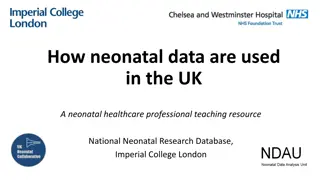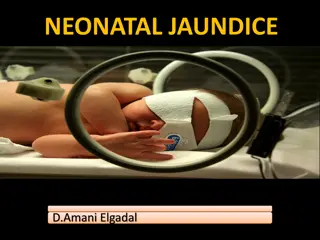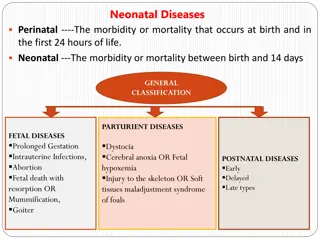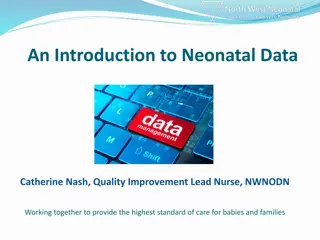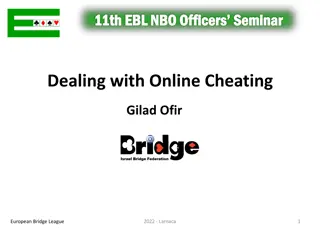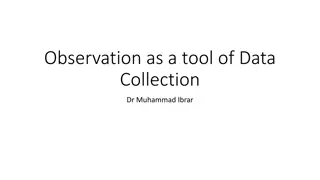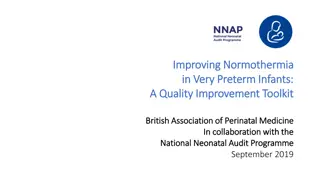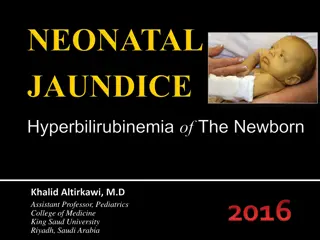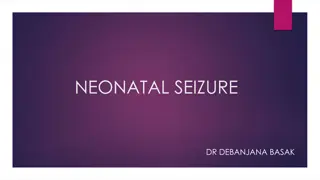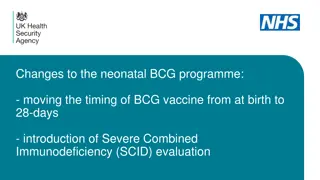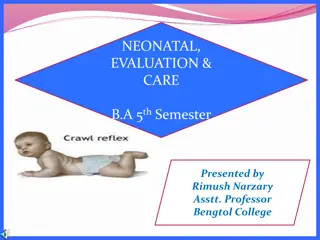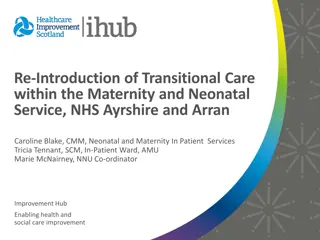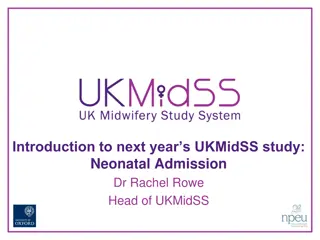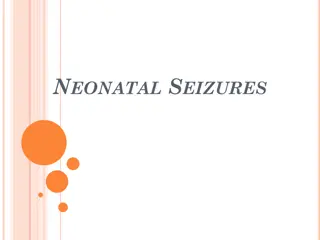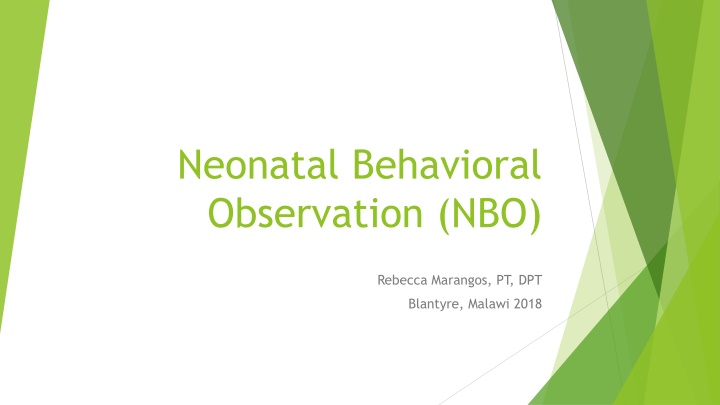
Neonatal Behavioral Observation (NBO) System
Discover the Neonatal Behavioral Observation (NBO) system designed to strengthen the parent-infant relationship in the early stages of life. Learn about the NBO's focus on relationship-building, strength-based approach, and enhancing parental understanding of their baby's unique capacities. Explore the behavioral states, competent newborn characteristics, and the AMOR hierarchy of neonatal neurodevelopmental organization.
Download Presentation

Please find below an Image/Link to download the presentation.
The content on the website is provided AS IS for your information and personal use only. It may not be sold, licensed, or shared on other websites without obtaining consent from the author. If you encounter any issues during the download, it is possible that the publisher has removed the file from their server.
You are allowed to download the files provided on this website for personal or commercial use, subject to the condition that they are used lawfully. All files are the property of their respective owners.
The content on the website is provided AS IS for your information and personal use only. It may not be sold, licensed, or shared on other websites without obtaining consent from the author.
E N D
Presentation Transcript
Neonatal Behavioral Observation (NBO) Rebecca Marangos, PT, DPT Blantyre, Malawi 2018
Objectives To understand what the NBO is To understand the two clinical windows of Behavioral States and AMOR To become familiar with the NBO items and feel confident discussing concepts with families
What is the NBO? The Newborn Behavioral Observations system is an interactive relationship-building tool designed to strengthen the relationship between infants and parents beginning in the newborn period through the first three months of life. Shifts the focus from assessment to relationship-building observation
Strength-based The NBO is strength-based and is primarily guided by the principle that the quality of early experiences drives brain development and functional outcomes The NBO can be used to support parents at a time when the very bases for parental functioning are being established Can be used to promote a positive relationship between clinician and family
The Baby as a Person The NBO describes the infant s capacities in such a way that The parents can begin to see their baby as a person Can better appreciate their baby s unique competencies and vulnerabilities Can learn to understand and respond to their baby, in a way that meets the baby s unique developmental needs
Behavioral States and Organization Deep Sleep (non-REM) Light Sleep (REM) Drowsiness Transition state Quiet Alert Active Alert Crying
The Competent Newborn Can visually track Can hear and locate sounds Can habituate Pays special attention to the human face Can imitate Can recognize mother s voice and smell Can discriminate mother s face from stranger Can recognize emotional expressions
AMOR: Hierarchy of Neonatal Neurodevelopmental Organization Autonomic/physiologic system Motor system Organization of State Responsivity
Autonomic Skin color Breathing patterns Visceral functioning Regulated Pink, stable color; regular respiration; stable digestion Stressed Pale, red, mottled, cyanotic color; irregular breathing; yawns, constipation, startling behaviors
Motor Muscle tone Posture Movements Regulated Smooth, balanced flexor-extensor tone; hands to face or mouth; sucking Stressed Jerky; extension patterning of movements and postures
Organization of State Range of state Clarity Transition pattern Regulated Fluctuates between behavioral states; Smooth transition between states; Easily soothed Stressed Not all states may be observed; States are difficult to identify; Rapid state changes; Difficult to soothe
Responsivity Maintains alertness Responds and interacts with animate and inanimate objects Regulated Able to maintain interactive periods at least briefly Stressed Strained; low level alertness or hyperalert
NBO Step By Step The order of item presentation depends on the state of the baby Outline the purpose: Let s look at your baby s behavior together. Let s see what we can learn about their individuality and their competence. Observe first State regulation/organization Autonomic: color, tremor, startles Activity level Begin formal NBO
NBO in Detail Habituation Light Sound Motor Muscle tone Rooting/sucking Hand grasp Pull to sit Crawling
NBO in Detail Responsivity Face Voice Sound Tracking Summary Observations Crying Soothability Regulation Response to stress Activity level
References Understanding Newborn Behavior & Early Relationships: The Newborn Behavioral Observation (NBO) System Handbook J. Kevin Nugent; Constance H. Keefer; Susan Minear; Lise C. Johnson; Yvette Blanchard 2015

